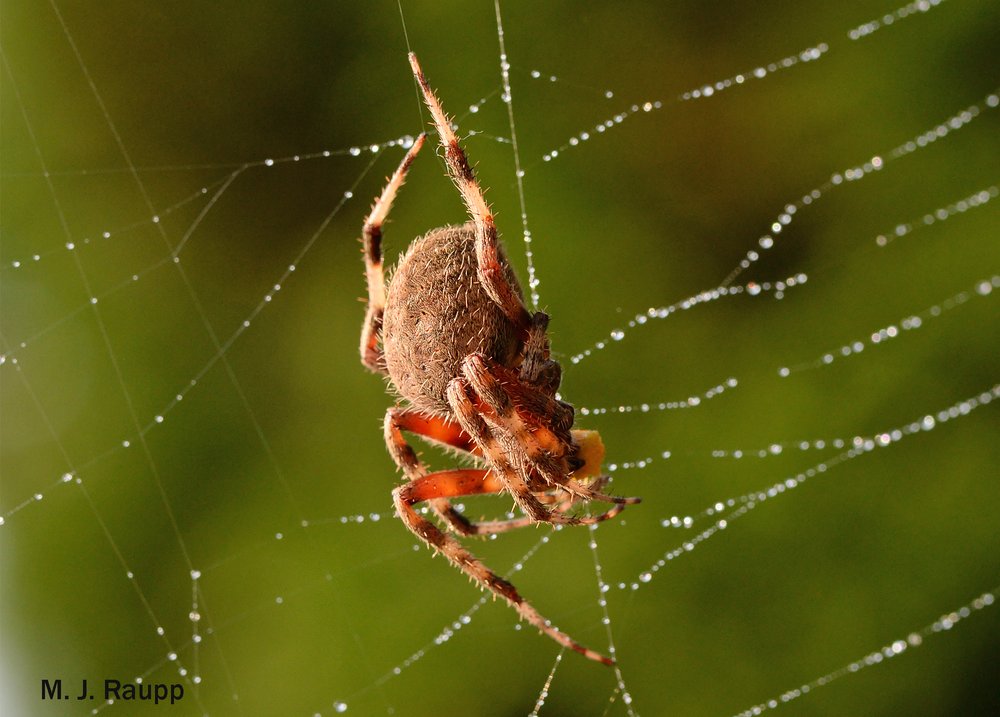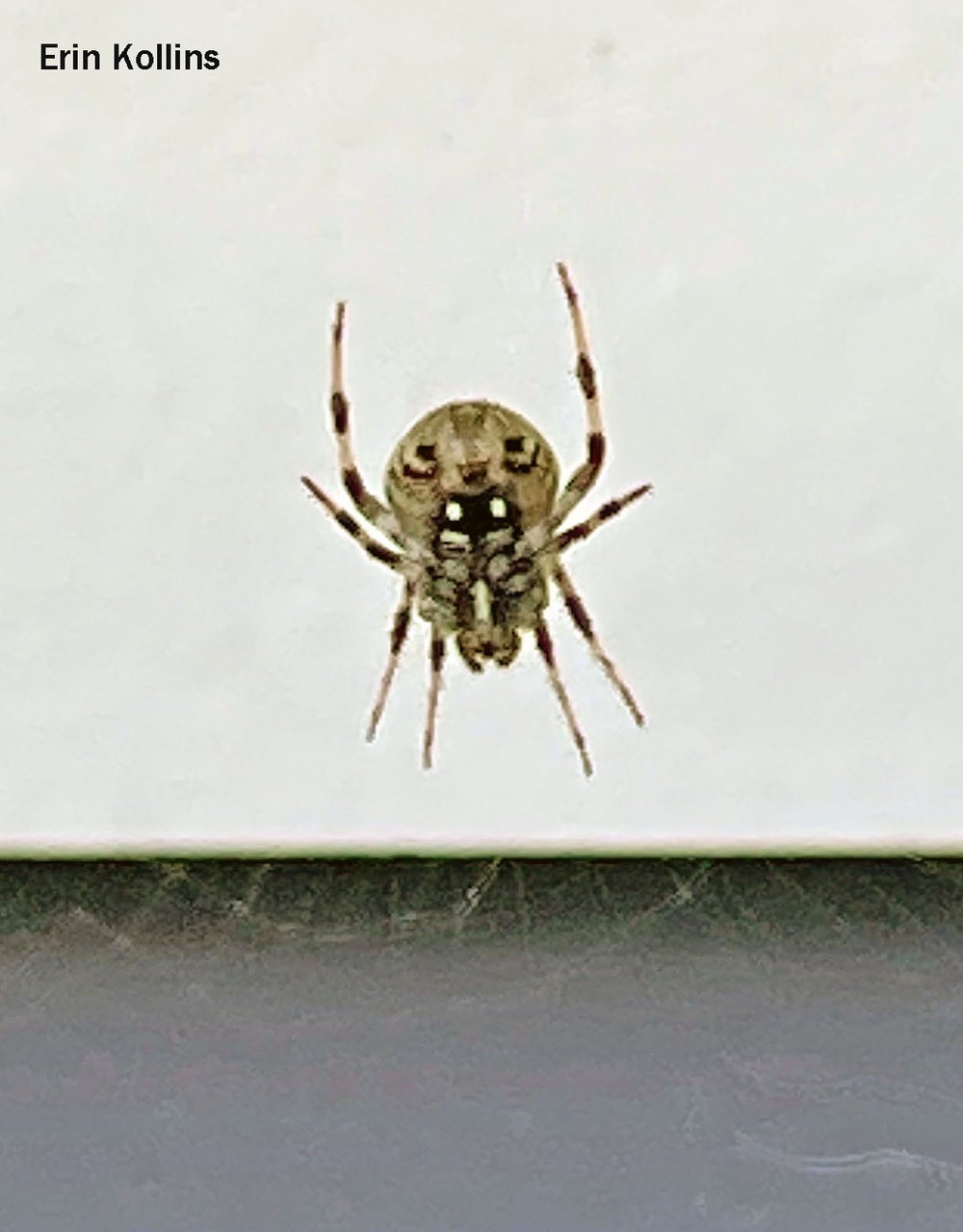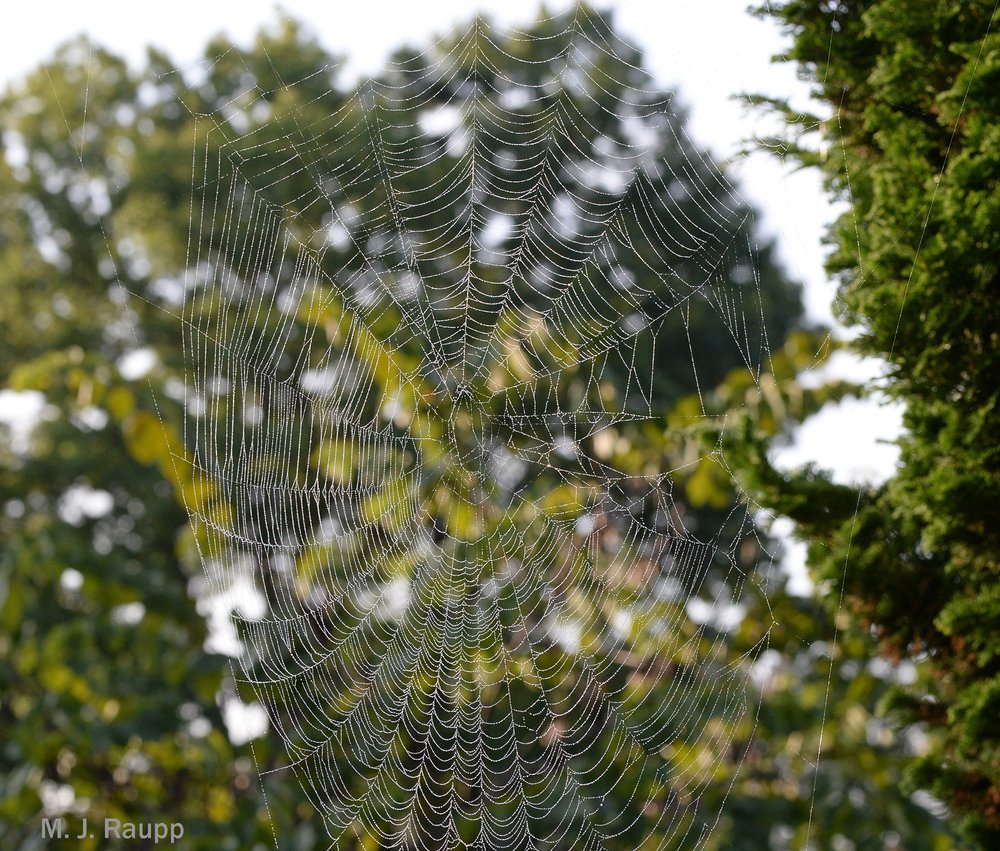From the Bug of the Week mail bag: Death spider? Nah, Spotted orbweaver, Neoscona crucifera

My spotted orbweaver just hanging out near the front porch.

A spotted orbweaver hanging upside-down presents a spooky visage to a curious mom. Image credit: Erin Kollins
Last week I received an inquiry from a concerned mother of two children who encountered a large and somewhat imposing spider apparently suspended in mid-air on her front porch. Hanging upside-down with striped hind legs raised, and a pair of dark eye-spots staring at her, this mom wondered if this arachnid was a “death spider”, a reasonable question with curious youngsters about. Late summer is a time when many spiders reach maturity and maximum size, having devoured nutritious prey throughout the growing season. We visited large and colorful orbweavers, the black and yellow garden spider and the marbled orbweaver, in previous episodes.
A few years back at the far end of my front porch, I also had the pleasure of a visit from a spotted orbweaver. She had taken up residence beneath the overhang of my front porch. Her web was no tiny affair like webs of cellar spiders or common house spiders we met in previous episodes. This web spanned almost two feet across. Her web was a masterpiece and a rapid chill on a humid night spawned a fine mist perfect for decorating the threads of an orbweaver’s web. What a delight. In more natural settings, the spotted orbweaver is often encountered in woodlands where it builds its web amongst the twigs and branches of trees and shrubs. Interesting studies of their web placement revealed that these spiders are creatures of the light. Webs are strung in relatively well lighted areas where the density of flying prey is greater.
During the day, my orbweaver hides out in a silken redoubt beneath the eves, but at sunrise she can be found feasting on an unidentified morsel or tidying up her web.

A fine morning mist reveals the beautiful web of a spotted orbweaver.
This scenario surely fit with the location of my orbweaver’s web. It was cleverly constructed in a light gap between shrubs and my home on the southern exposure of my porch. During the daytime, the orbweaver hid in a small silken refuge attached to the overhang of my porch. At night, after constructing a new web, it hung head down in the center of the web awaiting hapless victims to entangle themselves. Spotted orbweavers use powerful fangs called chelicerae to pulverize their prey. The protein in these morsels is turned into eggs, as many as a thousand of them, deposited in a spherical egg sac placed near the web. Eggs pass the rigors of late autumn and winter and hatch the following spring. And yes, just as E. B. White described it in ‘Charlotte’s Web’, shortly after hatching the spiderlings will stand on tiptoes, release strands of silk, and balloon on a warm breeze to establish webs of their own.
Watch as this orbweaver wraps its prey and delivers occasional paralyzing bites to the victim.
Acknowledgements
The wonderful web site “Neoscona crucifera (Spotted Orbweaver)” at www.spiders.us and the article “Choosing Hunting Sites: Web Site Preferences of the Orb Weaver Spider, Neoscona crucifera, Relative to Light Cues” by M. R. Adams were used as references for this episode. The inspiration for this episode came from Erin Kollins who shared her image of a “death spider”, and to several Maryland Master Naturalists who inquired about large orbweavers they recently encountered.
This post appeared first on Bug of the Week